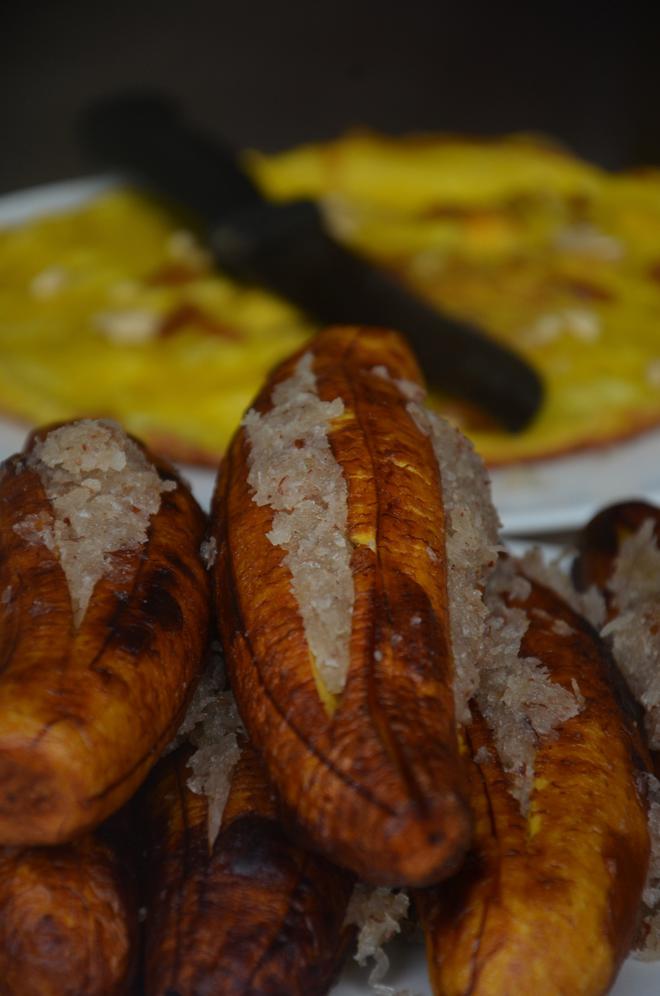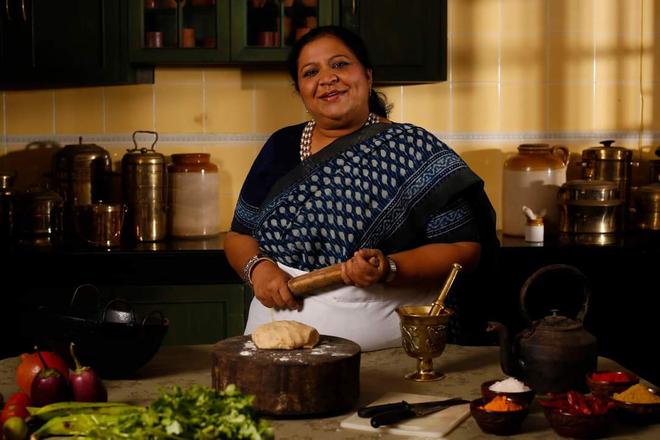Mahajabeen Ansar’s ancestors came to Kochi from Kutch in the early 1800s. Over the 200 years of living here, assimilating and adapting, the Kochi’s Kutchi Memon community’s food has come to bear Kerala influences. “Although the food we have after roza (Ramzan fasting) has more or less stayed the same, we now have fried fare like pazham pori (banana fritters) and bhajjias too. We make nombu kanji (rice gruel) and sometimes even thari kanji, though not very often,” the retired school teacher explains.
She reminisces how in the past iftar was an occasion for the whole family to get together and catch up. “There were more people, families were larger, especially since most were joint. The spread also used to be more lavish.” Times may have changed, families become smaller, but she sticks to food cooked traditionally during Ramzan.
Cooling foods
Badam (almond) sherbet follows dates, the first food eaten to break the fast. “It is made with black khus-khus and stored for a few days. It is extremely cooling, which is beneficial as we fast during the warm months. Besides fruits, almond shahi phirni and falooda with lots of dry fruits, samosas and kebabs are also prepared,” the Thoppumpady native adds. Kebabs, she clarifies, are not the usual circular, flat ones or cylindrical ones but deep-fried round meatballs.
While these are had to break the fast after maghrib prayers, a more elaborate, fuller dinner follows later in the night. Making up this meal is usually kheema paratha, paya saag (saag is curry), curry made of mutton trotters, or kebab saag, meatballs cooked in coconut milk, which is had with either rice or roti.
“Then there is akkini, a version of pulao made of mutton, chana dal and spices. Muthiya is also important. These are rice dumplings in a gravy of either chicken or mutton,” Mahajabeen, 63, says.

Nombuthura (breaking fast) was a simple affair, with foods that aided digestion and rejuvenated the body after a day’s fasting. Consuming dates has a spiritual significance and is a must for those fasting. Gruel made of either rice or broken wheat and a combination of ingredients was integral to iftar.
The meals and the ingredients that go into them are such that fasting does not take a toll on the body. Fruits and juices are gentle on a system that has abstained from food the whole day. The heavier food comes later.
“We break fast with one date and water followed by thari kanji (a sweet gruel made of broken wheat, milk, sugar and a tempering of shallots), fruit juice, and snacks such as erachi pathal (a rice bread with a meat stuffing), unakkaya, samosa and fruits. This is how it has been traditionally for us. After the namaz at night, heavier meals are had. While some have jeeraka kanji (a cumin flavoured rice gruel), pathiri, chapathi or puttu are also had with mutton or chicken curry,” says Shakeela MA of Tirurangadi, Malappuram. The commonly found samosa in Kerala resembles the triangular Arabian samboosa rather than the North Indian version.
Also read | Ramzan: On a food trail exploring iftar spreads in Thiruvananthapuram
Shamshad Ibrahim, 69, of Thiruvananthapuram remembers the iftar spread being vastly different from what it is now. There were fewer fried foods and more gruels, fruits and fruit juices. “Those days after nombuthura there would be tea, and pathiri and mutton curry. We called in orotti-erachi. Our father hailed from the city, orotti is made more in these parts. My mother is from Punalur, so she made the thinner, finer pathiri. We kids would have that and mutton curry, while she would make a couple of thicker, orotti-like pathiri for my father. What I remember from those days is how I looked forward to eating puris, which were made at my mother’s home in Punalur. We had it either with a fish or meat curry or even a potato dish.”
A lighter meal sehri
In stark contrast to iftar is the sehri also known as suhoor or athaazham, the pre-dawn meal. “It is said that only if you eat should you fast,” Shamshad adds.

The sehri, comparatively light, is had before the morning prayers. “It is lighter compared to iftar. Aval (rice flakes), boiled nendran pazham (Kerala banana) mashed with ghee and thari kanji were commonly consumed. Some people used to have rice and bananas. Even today these are had. Then there are those who have rice and curries,” says Shakeela. She mentions a ‘curry’ made of moringa leaves cooked in rice soup (kanji vellam) with a tempering of mustard, shallots and red chillies eaten with rice. “It is as nutritious as it is soothing,” she says.
Mahajabeen remembers her grandmother feeding her khichdi or khichda — rice and dal cooked with mutton — with sugar and ghee as sehri. “She used to feed us children this, not only was it protein-rich but also tasty!”
Aapam with a twist
Nombuthura is synonymous with kadi (meaning bite) for someone from Fort Kochi. “Ask a child from the Fort Kochi - Mattancherry region why they fast during Ramzan and they would probably tell you “for the kadi”,” says Salman Faris, a businessman and food vlogger. “I was born and brought up in Fort Kochi and I have seen that the deep fried beef samosas are number one on the nombuthura meal options. Then come the aapams with a twist,” says Salman. If you thought the aapams are had with stew or curry, as is the norm, here, it is used as a wrap. “A crispy aapam will have either a parippuvada or a cutlet at its centre and it is folded and relished,” says Salman. This dish could probably have been inspired by the tea shops in the region that stay open all night to serve those who go out to sea.
The nombuthura kadis are not confined to samosas, one would find all the usual suspects there, says Salman. From pazhampori (banana fritters) to ullivada and bonda, it covers every fried snack usually made in Kerala. Salman especially loves the samosa, which his mother makes with a flavourful shrimp filling.
The pre-dawn meal is usually jeeraka kanji (porridge), which energises and replenishes the body.
Abida Rasheed’s recipes tinged with memories

Chef and Malabar food expert Abida Rasheed remembers the Ramzan seasons of her childhood and the first lessons in cooking that came with them. She, along with the other children in the family, were entrusted with an important task. They had to curl the edges of the kozhi ada, a bite-sized, deep-fried crispy snack.
“A large white sheet would be laid out and the children would sit around it. The grown ups would lay the puris with the chicken filling out on it and we had to carefully seal the edges by twisting the dough into a pattern,” says Abida. The snack has been a nombuthura (breaking the fast) staple since her childhood days. “They are about one-and-a-half inch long and half inch in breadth and to me, they are an integral part of my nombuthura menu,” she adds.
The other favourites that grace the occasion are the beef samosa and the evergreen favourite unnakkai — a popular Malabari snack made of banana, grated coconut and sugar. “It is just two snacks, either made of rice or wheat flour dough — one with a filling of meat and the other, sweet. Here we call it ‘erachi pandam’ and ‘madhura pandam’,” Abida says. While the meat filling could be chicken or beef, the sweet fillings involve various permutations and combinations of egg, sugar and ghee.
The pre-dawn meal, she says, is the Kochi Koya, a unique Malabari specialty dish made of plantain, coconut milk, shallots, ginger, lemon juice and sugar. “This is had with aval (rice flakes). It is filling, delicious and cools down the body,” says Abida. “This ancient dish is believed to have been brought to the Malabar by a Muslim man from Kochi and hence the name. But these are stories, we don’t really know how it actually came to be,” she adds.
Another Kozhikode nombuthura special that is dearly looked forward to is the maas, tuna from Lakshwadeep. The dried fish is powdered and mixed raw with grated coconut, shallots, green chilli in chutney form. This is relished with paper-thin, nice pathiri.
“The nombu seasons are nothing like what they were in the past. Families have become fragmented with people having moved out to different countries. Earlier, the entire family came together during Ramzan season and the cooking was done together. It is the traditional dishes that bring warm memories back,” says Abida.







